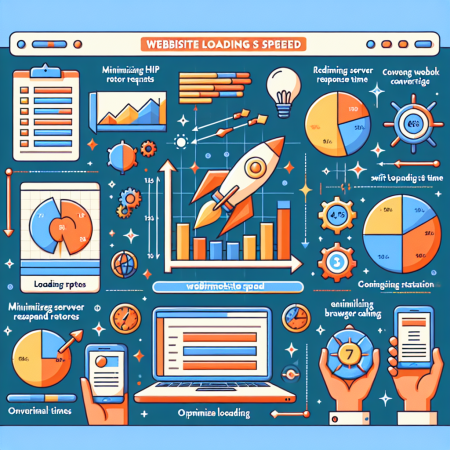How to Optimize Your Website’s Load Speed for Better Conversions
Section 1
One of the key factors that can significantly impact your website’s load speed is image optimization. Images that are too large in file size can slow down your website’s loading time. To address this, consider compressing your images without compromising quality. Use tools like Adobe Photoshop, TinyPNG, or Squoosh to reduce the file size of your images before uploading them to your website.
In addition to compression, make sure to use the appropriate image format. For photographs, JPEG is generally the preferred format, while PNG is ideal for images with transparency. By optimizing your images in terms of both file size and format, you can improve your website’s load speed and provide a better user experience.
Section 2
Another important aspect to consider when optimizing your website’s load speed is minimizing the use of plugins and scripts. While plugins and scripts can add functionality to your site, having too many can increase the time it takes for your pages to load. Review the plugins and scripts you currently have installed and consider removing any that are unnecessary or outdated.
Furthermore, consider combining multiple scripts into one file and loading them asynchronously to prevent them from blocking the rendering of your page. By reducing the number of plugins and scripts on your website, you can streamline the loading process and improve overall performance.
Section 3
Caching is a powerful technique that can help optimize your website’s load speed by storing static versions of your pages and serving them to users more quickly. Implement browser caching to instruct visitors’ browsers to store certain elements of your website locally, such as images, stylesheets, and scripts.
Additionally, consider using a content delivery network (CDN) to cache your website’s content across multiple servers located in different geographical regions. This can reduce latency and improve load times for users accessing your site from various locations. By leveraging caching strategies, you can enhance the speed and performance of your website.
Section 4
Reducing server response time is crucial for improving your website’s load speed and overall performance. Monitor your server’s response time using tools like Google’s PageSpeed Insights or GTmetrix to identify any issues that may be affecting load speed.
To optimize server response time, consider upgrading your hosting plan, enabling server-side caching, and minimizing the use of server resources. Additionally, ensure that your website code is clean and efficient to help reduce processing time on the server. By addressing server response time, you can enhance the speed and responsiveness of your website.
Section 5
Lastly, optimizing your website’s CSS and JavaScript files can have a significant impact on load speed. Minify your CSS and JavaScript files by removing unnecessary whitespace, comments, and characters to reduce file size. This can help streamline the loading process and improve rendering speed.
Consider loading CSS files in the header of your web pages and JavaScript files at the end of the body to prioritize critical content and allow for progressive rendering. By optimizing your CSS and JavaScript files, you can enhance your website’s load speed, user experience, and ultimately, boost conversions.
Related Content
- Command premium prices by offering limited-edition coaching experiences in 2025
- How to Use Social Media Marketing for Event Promotion
- Enhance product pages with immersive videos that showcase real-world use cases
- The Role of Digital Storytelling in Online Marketing
- Building Your Authority as an Expert Coach Online

